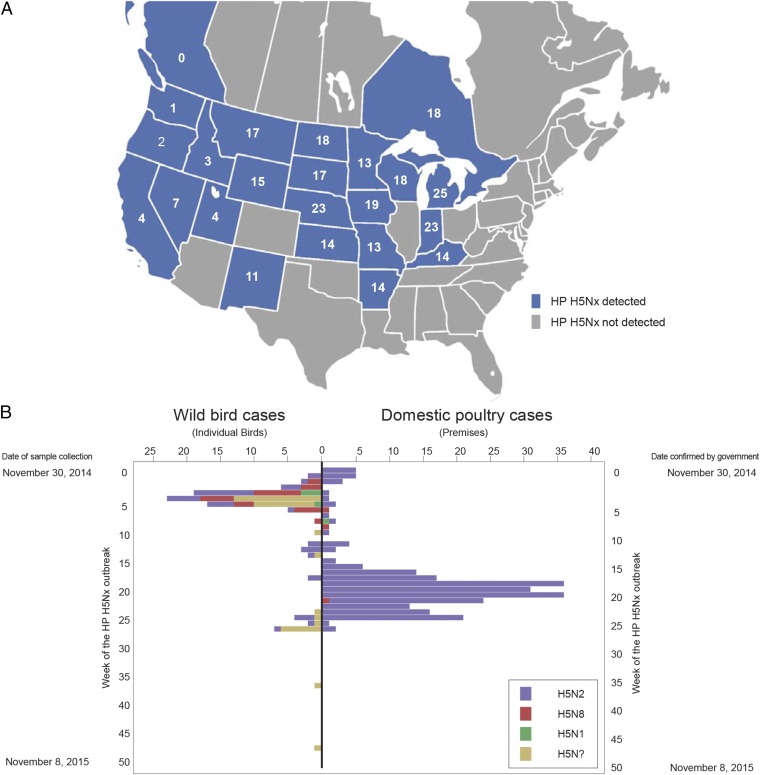Fig. 1.
Detections of highly pathogenic H5Nx IAVs in wild birds and poultry in North America (6–8, 10–12). (A) The week of the outbreak, when the initial detection of HP H5Nx IAVs occurred in each state or province. The numbers indicate the week in which the H5Nx viruses spread to wild birds and poultry. Following the initial appearance of HP H5N2 in the upper midwest of the United States in week 13 (February 2015), the H5N2 virus quickly spread to numerous poultry premises within the region. (B) Cases of HP H5Nx IAV shown by week of detection, with individual wild birds displayed on the left and poultry cases on the right. Subtypes are represented by the color code. HP H5Nx IAVs were detected in migratory waterfowl as they moved south in the Pacific flyway of North America during the initial weeks of the outbreak, but the number and frequency of HP H5Nx detections quickly dwindled, even in the face of increased surveillance. The H5Nx reports from wild birds on weeks 37 and 48 were based only on RT-PCR detection; virus isolation and sequence analysis were unsuccessful, so the pathotype could not be determined.

